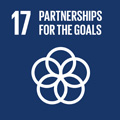- Docente: Biagio Oppi
- Credits: 6
- SSD: SPS/08
- Language: Italian
- Teaching Mode: Traditional lectures
- Campus: Bologna
- Corso: First cycle degree programme (L) in Communication Sciences (cod. 5975)
-
from Nov 10, 2025 to Dec 19, 2025
Learning outcomes
At the end of the course, the student has acquired the basic knowledge of business communication tools, public relations and the development of a communication plan.
Course contents
- Emerging scenarios of corporate communication and public relations
- The communication plan: theory and practice
- Internal and external communication
- Operational areas and tools: media relations, corporate communication, events, sponsorships, corporate social responsibility (CSR), institutional relations, crisis communication, unconventional marketing, neuromarketing, advocacy
The monographic part of the course focuses on communication in health: patient advocacy, awareness campaigns, and combating fake news in the medical-scientific field.
Readings/Bibliography
Required Texbooks
- Oppi, Biagio (2021) #PassioneComunicazione. Introduzione alle relazioni pubbliche e alla comunicazione strategica, Bononia University Press (website BUP [https://buponline.com/] )
- Muzi Falconi, Toni (2005), Governare le relazioni. Obiettivi, strumenti e modelli delle relazioni pubbliche [https://pranista.blog/wp-content/uploads/2023/12/il-governo-delle-relazioni-gorel.-toni-muzi-falconi.pdf], [https://virtuale.unibo.it/pluginfile.php/665623/mod_resource/content/2/Il%20Governo%20delle%20Relazioni%20-%20GoRel.%20Toni%20Muzi%20Falconi.pdf] Edizioni Il Sole 24 Ore (available in .pdf)
- Martello Stefano, Oppi Biagio (2017)Disastri Naturali: una comunicazione responsabile? L'Aquila, l'Emilia-Romagna e il centro Italia. Verso un modello strutturato di ascolto e resilienza attiva, Bononia University Press
Recommended basic texts
- Diegoli Gianluca (2020), Svuota il carrello. Il Marketing spiegato benissimo, UTET
- Martello S., Vazzoler S. (2020) Libro bianco sulla comunicazione ambientale, Pacini Editore
- Testa Annamaria (2007), La Pubblicità, Il Mulino
- Vignati Fabrizio (2024) Public relations. Teoria, metodologia e strumenti di una professione della comunicazione, Guerini Next
To better understand Corporate Communication
- Brown R., Pehrson S. (2023) Psicologia Sociale dei gruppi, Il Mulino
- Capeci Federico (2017),Post Millennial Marketing. Marketing di nuova Generazione, Franco Angeli Ed.
- Cavazza Nicoletta (2017), Comunicazione e Persuasione, Il Mulino
- Ferrari Tino (2016), Comunicare l'impresa. Realtà e trend polisensoriale-emozionale. Bologna: CLUEB (Cooperativa Libraria Universitaria Editrice Bologna) - Versione eBook
- Ferrari Tino (2009), Marketing e comunicazione non convenzionale. Guerrilla, virale, polisensoriale emozionale. Bologna: Clueb. / Cap. 1-2-3
- Frankfurt Harry (2005), On Bullshit, Princeton University
- Grandi Roberto, Miani Mattia (2006), L'impresa che comunica. ED. ISED / Cap. 6 "Pubblici e stakeholder"
- Martello S., Vazzoler S. (2020) Libro bianco sulla comunicazione ambientale, Pacini Editore
Documents & Articles (downloadable)
- AA.VV (2012), Melbourne Mandate (trad. italiana) [https://static1.squarespace.com/static/561d0274e4b0601b7c814ca9/t/5e1dc148210a4e03880d811b/1579008334310/Melbourne-Mandate-Text-final.pdf], Global Alliance for PR and Communication management
- AA.VV. (2012),Building Belief. A New Model for Activating Corporate Character and Authentic Advocacy, Arthur Page Society
- Vazzoler S. (2021) Il Decalogo della comunicazione ambientale, [https://www.amapola.it/decalogo-comunicazione-ambientale/] Amapola
Recommended Websites
- AMEC Framework [https://amecorg.com/amecframework/]
- Creatori di Futuro [https://creatoridifuturo.it/]
- Ferpi [https://www.ferpi.it/]
- Global Alliance for PR & Communication Management [https://www.globalalliancepr.org/]
- Influence [https://influenceonline.co.uk/]
Teaching methods
The course will be structured in lessons divided into theory and concrete cases, which will be accompanied by group exercises on the development of communication plans and communication tools.
A series of real case histories are planned, presented by communication professionals, both Italian and foreign, in the form of an interview/conversation guided by the teacher (in Italian and English).
The practical part is activated with the permanent laboratory called Comm To Action: from this laboratory, a working group has been created that one can join if genuinely motivated, which also carries out ad hoc project work during the academic year. For more information, please visit the website.
Assessment methods
The assessment of learning for attending students takes place through the following steps:
- two mid-term tests during the lessons to be submitted by the deadlines indicated by the teacher in class;
- a final project work (approximately 40 slides) to be developed during the course on topics indicated by the teacher, to be submitted.
-----------------------
NON-Attending students will take an oral exam on the required texts during a reserved session for them and subsequently submit an individual project work (approximately 20 slides) on a topic agreed upon with the teacher at the exam.
Teaching tools
The lessons will be supported by the projection of slides and films, the presentation and analysis of concrete cases, the use of specialized websites, and testimonies from professionals.
Further bibliographic and web resources for in-depth study will be communicated during the lessons.
Office hours
See the website of Biagio Oppi
SDGs




This teaching activity contributes to the achievement of the Sustainable Development Goals of the UN 2030 Agenda.
